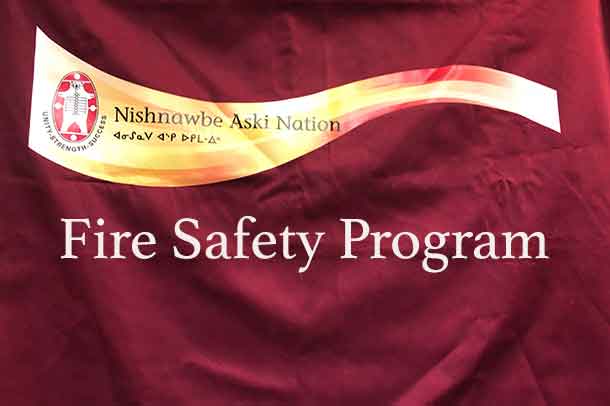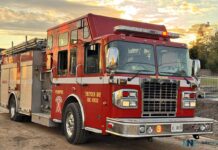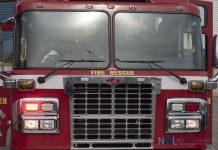
THUNDER BAY – Nishnawbe Aski Nation (NAN) has presented an action plan to improve fire safety and prevention in NAN First Nations during an appearance before a federal committee studying fire safety in Indigenous communities.
“House fires have claimed far too many lives across NAN territory, and our leaders have demanded action before more lives are lost. Substandard housing, unsafe heating sources, and a lack of fire-fighting resources, training, and equipment contribute to these tragedies. We have prepared a plan with specific action items to address these issues, and look to the Government of Canada to accept them for their implementation,” said Grand Alvin Chief Fiddler.
Many northern First Nations lack the fundamental fire protections, including in many cases smoke detectors and fire rescue services.
A NAN delegation, including fire safety and housing experts, appeared before the Standing Committee on Indigenous and Northern Affairs in Ottawa today to provide insight and recommendations on the Committee’s study Fire Safety and Emergency Management in Indigenous Communities.
“Several inquests, studies, and reports have made recommendations to improve fire safety and prevention in NAN First Nations, but few have been acted upon with the urgency required. We appreciate the work of the Standing Committee to address fire safety and emergency preparedness, and hope they will support our plan and recommendations to increase safety in our communities,” said Fiddler.
NAN Presents 10-Point Action Plan
NAN outlined a 10-point action plan through Amber’s Fire Safety Campaign and has asked the Standing Committee to recommend its implementation by the Government of Canada.
NAN also presented several recommendations to improve fire safety and emergency management in NAN First Nations, and calls on the federal government to:
- Provide funding and resources for the implementation of the Amber’s Fire Safety Action Plan for NAN First
- Provide funding, resources, and enforcement to ensure that all homes and infrastructure meet national building and fire codes, as per funding
- Support and establish an Independent Fire Marshal Office for First Nation communities to assist First Nations communities with safety and prevention through establishing fire safety standards and performing regular
- Reinstate the tracking of fires on-reserve and create a detailed database of deaths, infrastructure loss and other fire-related incidents and response for use in analytics for the evaluation of fire protection and prevention measures and
- Explore the development of a trilateral process between NAN and the governments of Canada and Ontario to review the provincial Fire Prevention and Protection Act (1997) in order to provide equitable fire prevention services and protection under the rule of
The 2007 report Fire Prevention in Aboriginal Communities by the Canada Mortgage and Housing Corporation found that fire losses (deaths, injuries, and destruction of property) in First Nation communities, particularly those on remote First Nations lands, far exceed those in comparable off-reserve communities.
The report concluded that: the First Nations per capita fire incidence rate is 2.4 times the per-capita rate for the rest of Canada; the death rate is 10.4 times greater; the fire injury rate is 2.5 times greater, and the fire damage per unit is 2.1 times greater.
Endorsed by Chiefs-in-Assembly in 2016, NAN launched Amber’s Fire Safety Campaign to increase fire safety and help prevent tragic house fires that have devastated our communities and claimed far too many lives.
The campaign is named in memory Amber Strang, an infant just five months old and the youngest victim of the March 29, 2016 house fire in Pikangikum First Nation that claimed nine lives, including three generations of her family.
More information: www.nan.on.ca/firesafety






